Snowshoeing at night is an activity not to be missed! Under a full moon, the snow sparkles, and you can feel the emphasis on the quiet solitude. But, as peaceful as a daylight snowshoe adventure can be, nightshoeing is much more so.
Before you head into the mountains, there are some areas to keep in mind during your planning and preparation:
Some of the links in this article may contain affiliate links. When you purchase using these links, part of the proceeds go to Snowshoe Mag. Additionally, as an Amazon Associate, we earn from qualifying purchases. Please see our disclosure for more details.
The Basics
Of course, you’ll need to bring snowshoes on your adventure. Some snowshoers choose to use poles, too. Of course, you’ll want to bring your regular daypack and accessories, just like a day hike.
Since it will be dark out, you’ll also need a light source. Consider a headlamp (like this one from Black Diamond) for hands-free operation. The snow will reflect the light far more efficiently than plants or rock will reflect it, so you’ll find you don’t need as powerful of light as when you’re hiking at night. Remember to bring extra batteries, though. You’ll need that light to get home safely unless the moon is bright.
Read More: Snowshoeing For Beginners: The First-Timer’s Guide
Timing
The best time to go to the mountains at night is when you’re invited. The mountains will always be there, so don’t force a visit. Safety and avoiding hazards should be your primary concern.
Check the Avalanche Forecast
Make the avalanche forecast to make sure your risk is low. For U.S. avalanche forecasts, visit avalanche.org, and for Canada, visit Avalanche Canada. In the U.K., check out the Scottish Avalanche Information Service website for avalanche forecasts.
Read More: Why All Snowshoers Should Be Avalanche Aware (Even Beginners)
Choose Your Sky
Although there are great adventures in the falling snow, the best nights are the ones with clear skies. Even better snowshoeing occasions are on nights with bright moons. So plan your trip around the moon phase, moonrise, and moonset.
Select your location on timeanddate.com to find the best times to be out. The moon will appear bigger near the horizon but remember that ridges and peaks may obscure the moon if you’re in a valley.
Don’t despair if the only clear nights are when the moon won’t light the snow. If you’re far enough from light pollution, there’s no better time to stargaze. Look for the auroras (Borealis or Australis, depending on your hemisphere), Milky Way, other constellations, meteor showers, and the International Space Station. (If you want to try for a picture, bring your tripod and a lot of patience.)
Read More: How To Navigate by Using the Stars
Warmth
Just like any snowshoeing adventure, you need to prepare for the cold. At night, though, it can be significantly colder, doubly so if you decide to stop to look at the night sky or enjoy the silence.
Bring Extra Gear
To stay warm, layer like you would for daylight snowshoeing, but carry an extra down coat and thicker gloves.
Also, a closed-cell sleeping pad (like a Therm-a-Rest Z Lite) will give you a comfortable place to rest without getting chilled by contact with the snow. For real comfort, dig yourself a lounge chair and use the pad as a cushion.
Read More: Winter Camping Checklist: What To Bring on Your Trip
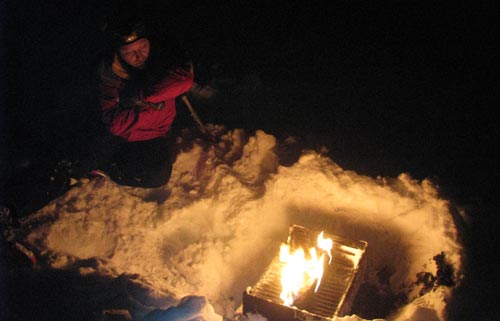
There’s nothing like a fire at night for a physical and psychological boost while snowshoeing. Photo: John Soltys
Light a Fire
When permitted, a fire can provide warmth and light, and a psychological boost.
You’ll probably need to carry all your own wood, so choose wisely. An artificial log (like Duraflame Roasting Logs) can start your fire quickly and easily. Be cautious, though. Not all artificial logs are safe for cooking, and you’ll probably want some s’mores, if nothing else.
In addition to fuel, you’ll need something to burn on. Without some platform, your fire will melt down through the snow. The easiest way to make this work is to snowshoe to a campground or picnic area and dig out a BBQ stand or pit.
Pro tip: Make sure you know where the BBQs are before you arrive. It’s frustrating to dig up five mounds only to find none of the BBQ stands you were looking for in the first place.
As always, practice the principles of Leave No Trace when burning a fire.
Read More: The Winter Campfire: A Primer for Snowshoers and Campers
Navigation
The first time you venture into the snow after dark, you’ll find that even the most familiar routes are mysterious and confusing. Even experienced adventurers have been known to come across their tracks and start following them as though they belonged to someone else.
Plan your first after-dark trip in an area you know well. Choose an established route with trail markers rather than blazing your own trail. Additionally, travel in the open if you can. Roads and options close to home make excellent beginner trails, especially if you have a map. (A GPS won’t hurt either, but it should never be relied upon exclusively.)
Read More: Compass and Map Reading 101: Basics for the Beginner
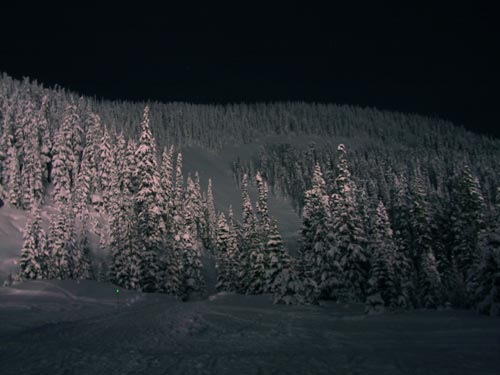
Familiar routes can be confusing in the dark, so always come prepared with navigation. Photo: John Soltys
Contingency Planning
More than anything else, you must be prepared for an accidental overnight in the snow. You could get lost in the dark, break a snowshoe, or your car could refuse to start when you’re ready to head home.
You should always have the essentials and know how to use them to survive the night. Always leave a trip plan with someone who can call for help if you don’t return, and don’t deviate from that plan.
Read More: 6 Ways To Refresh Your Safety for Snowshoeing and Winter Hiking
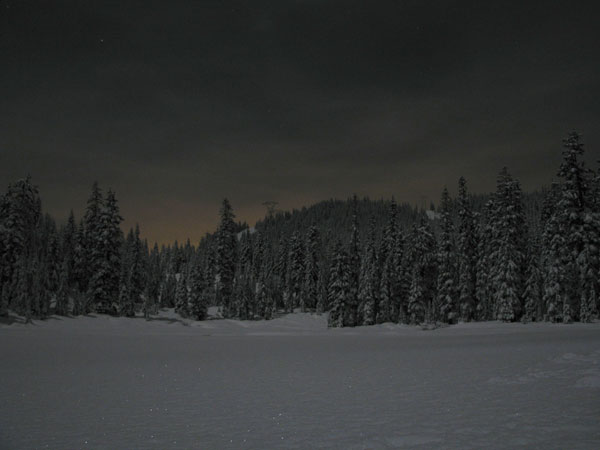
The sight of the first light can be beautiful, but you never know when you could accidentally get stranded in the dark. Always be prepared! Photo: John Soltys
Next time the forecast is for a cold, clear night, take advantage of it and head to the snow. You’ll find that nightshoeing can be a magical experience well worth the extra preparation.
Have you ever been snowshoeing at night? What was your experience? Do you have any other recommendations?
This article was originally published on February 17, 2014, and was most recently updated on December 20, 2022.
Read Next: Moonlight, Snow Angels, and Snowshoes

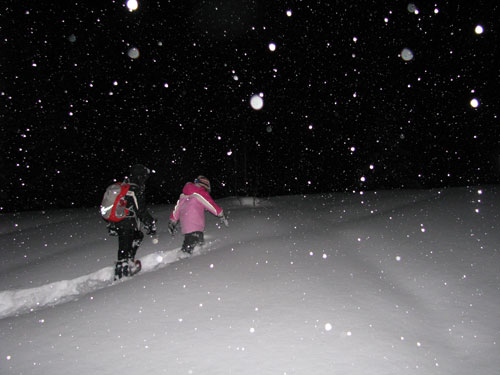
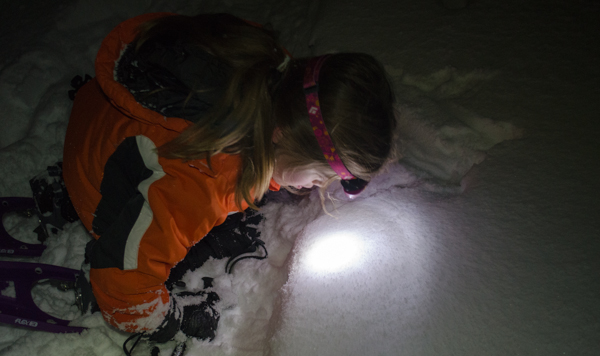
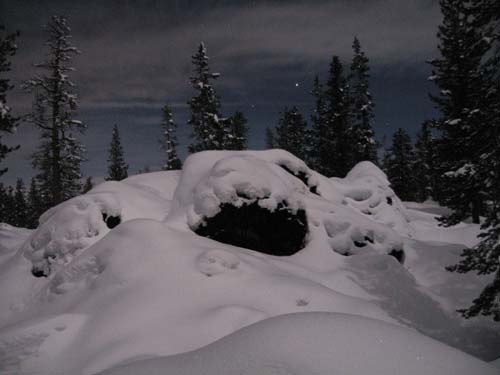
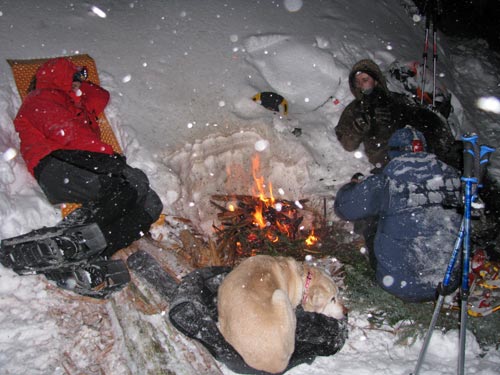
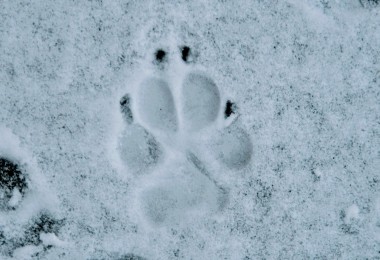
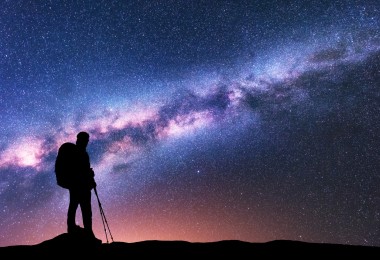
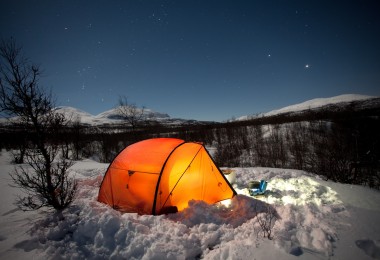
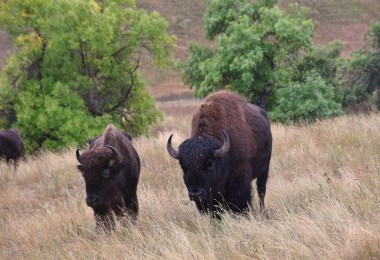

Leave a Comment